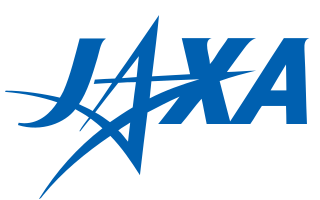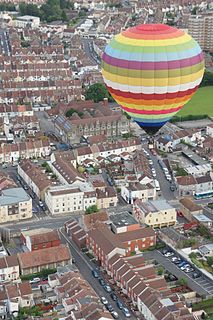Related Research Articles

Mariner 5 was a spacecraft of the Mariner program that carried a complement of experiments to probe Venus' atmosphere by radio occultation, measure the hydrogen Lyman-alpha spectrum, and sample the solar particles and magnetic field fluctuations above the planet. Its goals were to measure interplanetary and Venusian magnetic fields, charged particles, plasma, radio refractivity and UV emissions of the Venusian atmosphere.

An aerobot is an aerial robot, usually used in the context of an unmanned space probe or unmanned aerial vehicle.

The Infrared Space Observatory (ISO) was a space telescope for infrared light designed and operated by the European Space Agency (ESA), in cooperation with ISAS and NASA. The ISO was designed to study infrared light at wavelengths of 2.5 to 240 micrometres and operated from 1995 to 1998.

1566 Icarus, provisional designation 1949 MA, is an extremely eccentric asteroid, approximately 1.4 km (0.87 mi) in diameter. It is a near-Earth object of the Apollo group and the lowest numbered potentially hazardous asteroid. In 1968, it became the first asteroid ever observed by radar. Its orbit brings it closer to the Sun than Mercury and further out than the orbit of Mars, which also makes it a Mercury-, Venus-, and Mars-crosser. This stony asteroid and relatively fast rotator was discovered by German astronomer Walter Baade at the Palomar Observatory, California, on 27 June 1949. It was named after the mythological Icarus.

Venera 9, manufacturer's designation: 4V-1 No. 660, was a Soviet uncrewed space mission to Venus. It consisted of an orbiter and a lander. It was launched on June 8, 1975, at 02:38:00 UTC and had a mass of 4,936 kilograms (10,882 lb). The orbiter was the first spacecraft to orbit Venus, while the lander was the first to return images from the surface of another planet.

The Japan Aerospace Exploration Agency (JAXA) is the Japanese national aerospace and space agency. Through the merger of three previously independent organizations, JAXA was formed on 1 October 2003. JAXA is responsible for research, technology development and launch of satellites into orbit, and is involved in many more advanced missions such as asteroid exploration and possible human exploration of the Moon. Its motto is One JAXA and its corporate slogan is Explore to Realize.

In aeronautics, a balloon is an unpowered aerostat, which remains aloft or floats due to its buoyancy. A balloon may be free, moving with the wind, or tethered to a fixed point. It is distinct from an airship, which is a powered aerostat that can propel itself through the air in a controlled manner.

Project Echo was the first passive communications satellite experiment. Each of the two American spacecraft, launched in 1960 and 1964, were metalized balloon satellites acting as passive reflectors of microwave signals. Communication signals were transmitted from one location on Earth and bounced off the surface of the satellite to another Earth location. The first transmissions using Echo were sent from Goldstone, California to Holmdel, New Jersey on 12 August 1960. The last Echo satellite deorbited and burned up in the atmosphere on 7 June 1969.

Deep Space Climate Observatory is a National Oceanic and Atmospheric Administration (NOAA) space weather, space climate, and Earth observation satellite. It was launched by SpaceX on a Falcon 9 v1.1 launch vehicle on 11 February 2015, from Cape Canaveral. This is NOAA's first operational deep space satellite and became its primary system of warning Earth in the event of solar magnetic storms.

Meteor is a 1979 science fiction disaster film directed by Ronald Neame, and starring Sean Connery and Natalie Wood. The film's premise, which follows a group of scientists struggling with Cold War politics after an asteroid is detected to be on a collision course with Earth, was inspired by a 1967 MIT report Project Icarus. The screenplay was written by Oscar winner Edmund H. North and Stanley Mann.

High-altitude balloons are crewed or uncrewed balloons, usually filled with helium or hydrogen, that are released into the stratosphere, generally attaining between 18 and 37 km above sea level. In 2002, a balloon named BU60-1 reached a record altitude of 53.0 km.

A gas balloon is a balloon that rises and floats in the air because it is filled with a gas lighter than air. When not in flight, it is tethered to prevent it from flying away and is sealed at the bottom to prevent the escape of gas. A gas balloon may also be called a Charlière for its inventor, the Frenchman Jacques Charles. Today, familiar gas balloons include large blimps and small latex party balloons. For nearly 200 years, well into the 20th century, manned balloon flight utilized gas balloons before hot-air balloons became dominant. Without power, heat or fuel, untethered flights of gas balloons depended on the skill of the pilot. Gas balloons have greater lift for a given volume, so they do not need to be so large, and they can stay up for much longer than hot air balloons.

The Cecil and Ida Green Building, also called the Green Building or Building 54, is an academic and research building at the Massachusetts Institute of Technology (MIT) in Cambridge, Massachusetts. The building houses the Department of Earth, Atmospheric, and Planetary Sciences (EAPS). It is one of the tallest buildings in Cambridge.

Hacks at the Massachusetts Institute of Technology are practical jokes and pranks meant to prominently demonstrate technical aptitude and cleverness, or to commemorate popular culture and historical topics. The pranks are anonymously installed at night by hackers, usually, but not exclusively, undergraduate students. The actions of hackers are governed by an informal, yet extensive, body of precedent, tradition, and ethics. Hacks can occur anywhere across campus, or occasionally off campus; many make use of the iconic Great Dome, Little Dome, Green Building tower, or other prominent architectural features of the MIT campus. Well-known hacker alumni include Nobel Laureates Richard P. Feynman and George F. Smoot. In October 2009, US President Barack Obama made a humorous reference to the MIT hacking tradition during an on-campus speech about clean energy.

CU Spaceflight is a student-run society at Cambridge University. It is founded with the aim of achieving access to space, with minimal financial expenses. The society is supported by the Cambridge-MIT Institute.

Non-rocket spacelaunch refers to concepts for launch into space where much of the speed and altitude needed to achieve orbit is provided by a propulsion technique that is not subject to the limits of the rocket equation. A number of alternatives to rockets have been proposed. In some systems, such as a combination launch system, skyhook, rocket sled launch, rockoon, or air launch, a portion of the total delta-v may be provided, either directly or indirectly, by using rocket propulsion.
A lifting gas or lighter than air gas is a gas that has a lower density than normal atmospheric gases and rises above them as a result. It is required for aerostats to create buoyancy, particularly in lighter-than-air aircraft, which include free balloons, moored balloons, and airships. Only certain lighter than air gases are suitable as lifting gases. Dry air has a density of about 1.29 g/L at standard conditions for temperature and pressure (STP) and an average molecular mass of 28.97 g/mol, and so lighter than air gases have a density lower than this.
Balloon Experiments with Amateur Radio (BEAR) is a series of Canadian-based amateur radio high-altitude balloon experiments by a group of amateur radio operators and experimenters from Sherwood Park and Edmonton, Alberta. The experiments started in the year 2000 and continued with BEAR-9 in 2012 reaching 36,010 metres (118,140 ft).

Launch Services Program (LSP) is responsible for NASA oversight of launch operations and countdown management, providing added quality and mission assurance in lieu of the requirement for the launch service provider to obtain a commercial launch license. It operates under the Human Exploration and Operations (HEO) Mission Directorate of NASA.

A Hypervelocity Asteroid Intercept Vehicle (HAIV) is a spacecraft being developed by NASA to deflect dangerous Near Earth objects (NEOs) such as comets and asteroids that threaten colliding with Earth. HAIVs focus on utilizing powerful explosives, such as nuclear bombs, to achieve deflection by detonating on the surface of the NEO to change its trajectory away from Earth. This method of asteroid impact avoidance is intended to be used on dangerous NEOs detected within a short time frame before a possible impact event with Earth. The idea came about when asteroid detection improved. Since then, scientists and engineers have made a well thought out design for an HAIV.
References
- 1 2 3 The $150 Space Camera: MIT Students Beat NASA On Beer-Money Budget, Wired, September 15, 2009
- ↑ MIT Students Take Space Photos on $150 Budget - iReport.com
- 1 2 Bellevue grad, MIT student uses helium balloon to capture near-space photos, Seattle Times